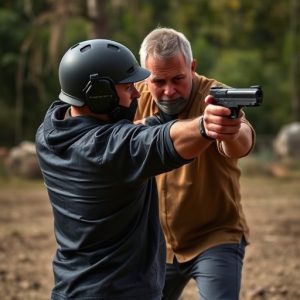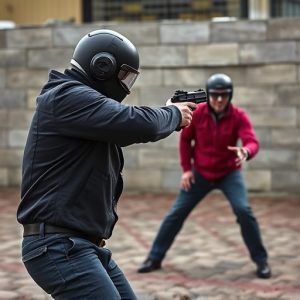Silent Stun Guns: Amperage Secrets for Discreet Self-Defense
Silent stun guns (Tasers) offer a discrete, non-lethal personal defense solution, temporarily incapa…….
Silent stun guns (Tasers) offer a discrete, non-lethal personal defense solution, temporarily incapacitating targets with electrical shocks. Amperage, or current strength, is key to their effectiveness; higher amperages deliver more powerful impacts while preserving discretion. These compact devices are ideal for close encounters and mental health emergencies, providing peace of mind for users. However, proper training and understanding legalities are essential to safe usage, as misuse carries health risks and potential legal consequences.
Electrical shock weapons, also known as stun devices, have gained popularity as discreet self-defense options. This article delves into the science behind amperage—a key factor in their effectiveness—and explores the evolution of silent stun guns in the ever-growing market of personal safety tools. We examine the amperage requirements for optimal stunning and delve into safety considerations and legal implications, providing insights crucial for those seeking effective yet responsible self-defense solutions.
- Understanding Electrical Shock Weapons: A Brief Overview
- The Science Behind Amperage and Its Impact on Stun Devices
- Silent Stun Guns: Discreet Self-Defense Options
- Amperage Requirements for Effective Stunning
- Safety Considerations and Legal Implications of High-Amperage Devices
Understanding Electrical Shock Weapons: A Brief Overview
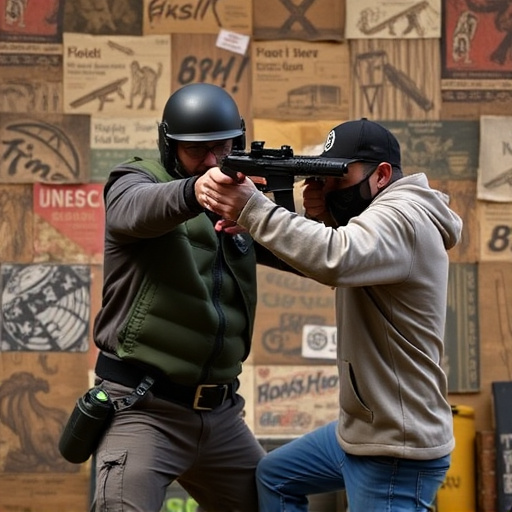
Electrical shock weapons, often referred to as stun guns or Tasers, are non-lethal force tools designed to temporarily incapacitate a target through electrical disruption of their neuromuscular system. These devices fire two small probes connected to wires, delivering a strong electric current that overrides the body’s natural signals, causing muscles to spasm and resulting in temporary paralysis. The use of silent stun guns for discreet self-defense has gained popularity due to their ability to subdue an aggressor without drawing excessive attention.
Unlike traditional firearms, electrical shock weapons do not rely on projectiles, making them quieter and less likely to cause permanent injury or death. This discreteness is particularly appealing to individuals seeking personal protection in various settings, from daily commutes to outdoor activities. The non-lethal nature of these devices also ensures that bystanders are not at risk of being hurt during an encounter, making them a preferred choice for law enforcement and civilians alike.
The Science Behind Amperage and Its Impact on Stun Devices
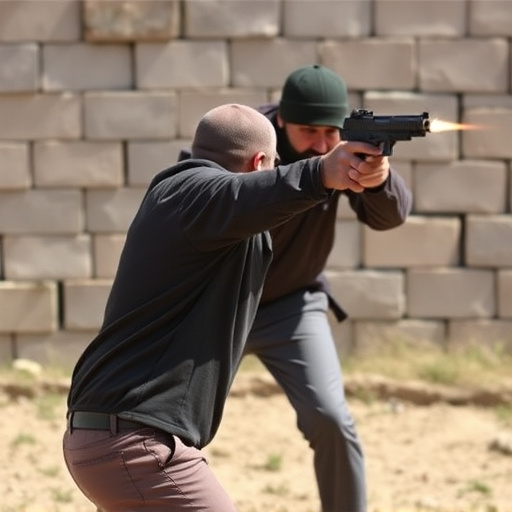
The Science Behind Amperage and Its Impact on Stun Devices
Amperage, or electrical current strength, plays a crucial role in the effectiveness of stun devices, including silent stun guns designed for discreet self-defense. It’s a measure of how many electric charges pass through a material per second. In the context of stun weapons, amperage determines the intensity of the shock delivered to an assailant. Higher amperage values mean more powerful shocks, which can temporarily incapacitate or disorient the target.
These devices operate by disrupting muscle control through electrical impulses. The current flows through the body, causing muscles to contract involuntarily. This disruption leads to a loss of balance and coordination, rendering the individual momentarily defenseless. Silent stun guns, known for their ability to stun without making loud noises, typically employ higher amperage settings to ensure their effectiveness while preserving silence, making them ideal for self-defense situations that demand discretion.
Silent Stun Guns: Discreet Self-Defense Options

Silent stun guns represent a revolutionary and discreet self-defense option, offering individuals a non-lethal way to protect themselves in various situations. These innovative devices utilize high voltage and low amperage electrical shocks to incapacitate an assailant temporarily, providing users with time to escape or seek help. Unlike traditional firearms, silent stun guns produce no audible noise, making them ideal for discreetly deterring potential threats without drawing undue attention.
The discreteness of silent stun guns is not only about their lack of sound but also their compact size and unassuming appearance. Designed to fit comfortably in pockets or purse, these stun devices can be easily carried by anyone, day or night, ensuring peace of mind. Their non-lethal nature makes them a preferred choice for personal safety, especially in situations where excessive force might not be justified, such as when facing an attacker in close quarters or dealing with mental health emergencies.
Amperage Requirements for Effective Stunning
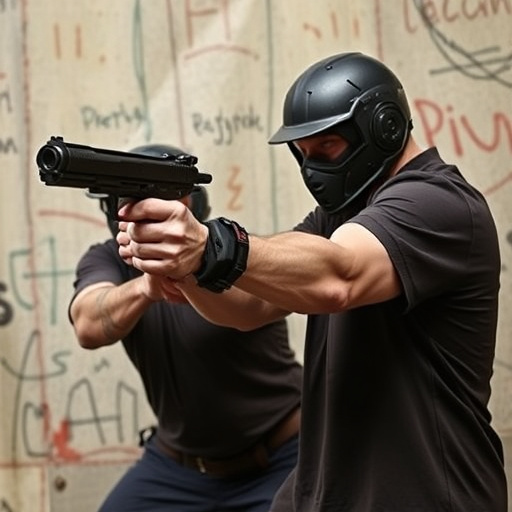
To ensure effective stunning with a silent stun gun for discreet self-defense, understanding amperage is key. The current (measured in amperes or ‘A’) delivered by the weapon needs to be sufficient to disrupt muscle control and temporarily incapacitate an attacker. Generally, stun devices are designed to output between 50,000 to 100,000 volts, but the true measure of their effectiveness lies in the amperage. A higher amperage, typically above 1,000 amps, is required to overcome an individual’s natural protective reflexes and deliver a powerful enough shock to render them temporarily unconscious.
This level of current disruption ensures that the stun gun can do its intended job without drawing undue attention—a key advantage for self-defense scenarios where discretion is crucial. Amperage also plays a role in the weapon’s range and penetration, with higher amperages allowing for a more effective shock at longer distances and through clothing, providing users with greater tactical flexibility.
Safety Considerations and Legal Implications of High-Amperage Devices

When considering high-amperage devices like silent stun guns for discreet self-defense, safety should be the paramount concern. These weapons deliver a powerful electric shock, capable of incapacitating an attacker temporarily. However, inappropriate use can lead to severe health risks, including cardiac arrhythmias and muscle damage. Users must receive adequate training to ensure they understand the device’s functionality, safe handling practices, and appropriate use in self-defense scenarios.
The legal implications of carrying high-amperage devices also demand attention. Different jurisdictions have varying laws regarding stun guns, with some permitting their use only for self-defense while others classify them as weapons that require permits or registration. Individuals must familiarize themselves with local legislation to avoid legal consequences and ensure they are using these powerful tools responsibly and within the bounds of the law.
In conclusion, electrical shock weapons, particularly silent stun guns designed for discreet self-defense, operate by delivering precise amperage to incapacitate an assailant temporarily. Understanding the science behind amperage and its impact on stun devices is crucial for effective deployment. While these tools offer powerful options for personal safety, it’s essential to consider safety implications and legal boundaries surrounding high-amperage devices, ensuring responsible use in today’s world.
